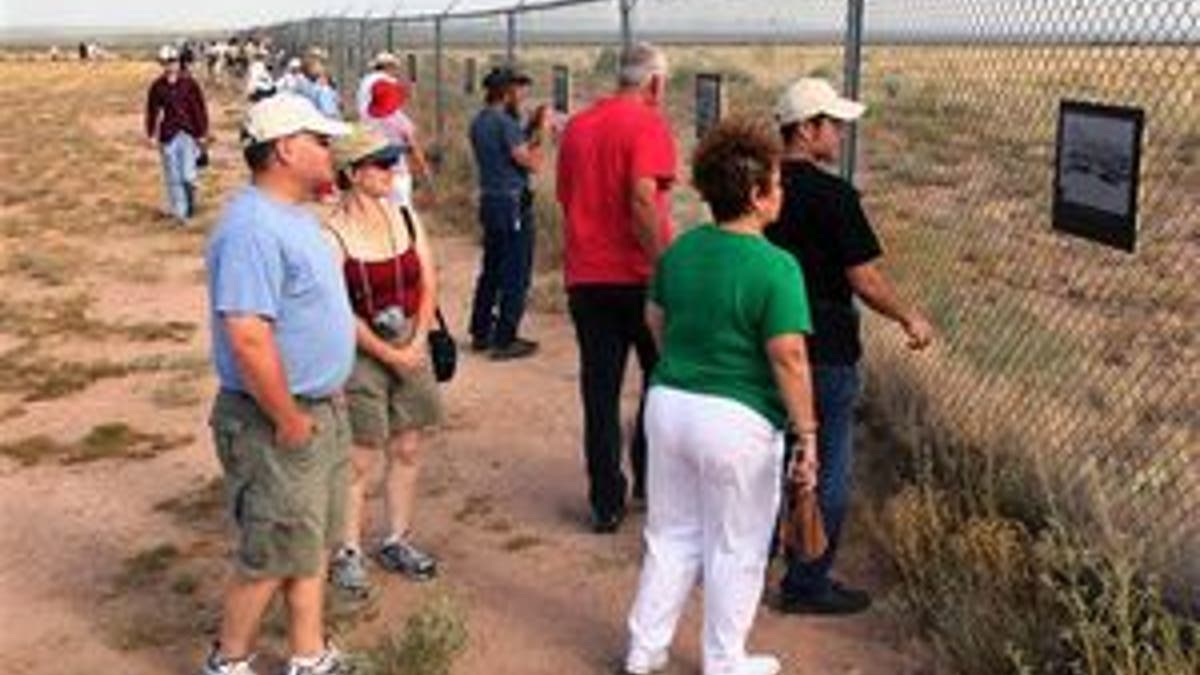
Protesters are planning a demonstration Saturday, April 4, 2015, as the Trinity Test site opens to visitors. (AP Photo)
Seven decades after an atomic bomb helped end World War II, descendants of families near a New Mexico test want tourists to know residents suffered for years afterward and some of their children may have been affected.
Hundreds of visitors are expected Saturday to visit the Trinity Test site as federal officials open up the historic grounds for a rare opportunity for tourists to view the site of the world's first atomic blast. The site typically opens for a few hours for at least once a year.
But as the 70th anniversary of test approaches, residents are pressing for acknowledgement and compensation. They say the test caused long-term health problems, including rare forms of cancer, for many Hispanic, white and Native American ranching families living in the area at the time.
"The history of the bomb is always told through the eyes of scientists and industry," said Tina Cordova, co-founder of the Tularosa Basin Downwinders. "We've been left out of the narrative."

(AP Photo)
During the Manhattan Project, a World War II program that provided enriched uranium for the atomic bomb, scientists in the secret town of Los Alamos worked to develop the bomb that would later dropped on the Japanese cities of Hiroshima and Nagasaki. The secretive projects involved three research and production facilities at Los Alamos; Oak Ridge, Tennessee; and Hanford, Washington.
On July 16, 1945, Los Alamos scientists successfully exploded the first atomic bomb at the Trinity site, located near Alamogordo. The steel tower that held the bomb disintegrated. Left in its place at the Trinity Site was a crater that stretched a half mile and was several feet deep.
The explosion was felt for miles in the remote area of southern New Mexico where an estimated 19,000 people lived. It took days for the radioactive debris to settle over New Mexico's Tularosa Basin.
"My father was a 3-year-old at the time of the explosion," Cordova said.
He later died from a third battle with cancer, said Cordova, who plans to lead around 50 protesters on Saturday.
A study conducted by the federal Centers for Disease Control and Prevention found that exposure rates near the Trinity Site were thousands of times higher than currently allowed. However, that research didn't take into account internal exposure, in which radioactive materials are absorbed in the body.
In recent years, the atomic bomb's development recently has generated public interest. Last year, for example, President Barack Obama signed a bill to make Hanford's B Reactor as part of the Manhattan Project National Historical Park.
In 2012, the Atomic Heritage Foundation and the Los Alamos Historical Society released the "Voices of the Manhattan Project" website aimed at creating a central repository for the oral histories surrounding the tightly guarded World War II-era project.
Cordova she has no problem with the country wanting to remember the legacy of the bomb. "But it's frustrating that we have money for parks and not for the people affected by the bomb," she said.
She wants the federal government to compensate New Mexico families hurt by the test. But more importantly, she wants people to stop and think about the Americans directly exposed to the atomic blast and how it's affected them for generations.
"We know the people visiting the site aren't in control of anything," Cordova said. "But maybe they'll see us, and think, we should do something for them."




















